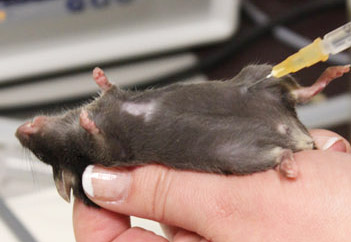In 2016, 16,327 experiments were performed, as opposed to 20,932 in 2015, and 26,086 in 2014. The decrease is caused by a change in application procedures in 2015. Legislation has become stricter, and there is more paperwork involved. ‘The decrease we are seeing is not as a result of an active reduction policy’, says RUG laboratory animal expert Miriam van der Meulen. She expects the numbers to go up over the next few years.
Embalmed rats
Three quarters of the RUG’s animal test subjects are rats and mice. Birds are also often used for research. Experiments on these animals have also gone down, from 4,377 to 3,422. This decrease might be permanent. It often concerns experiments in the wild. 2015 saw the definitive end of a large study into great and blue tits in the Lauwersmeer area.
New this year is the use of embalmed rats for the first-year practical exam in biology. While there are usually enough rats ‘left over’ from breeding, keeping them alive would be bad for their well-being, the IvD says in its report. That meant that new rats would be purchased just for the practical exam. The new embalming technique means the surplus of rats can be preserved until the practical exam.
How do researchers feel about their experiments on animals? Read our feature article Working with test animals.




